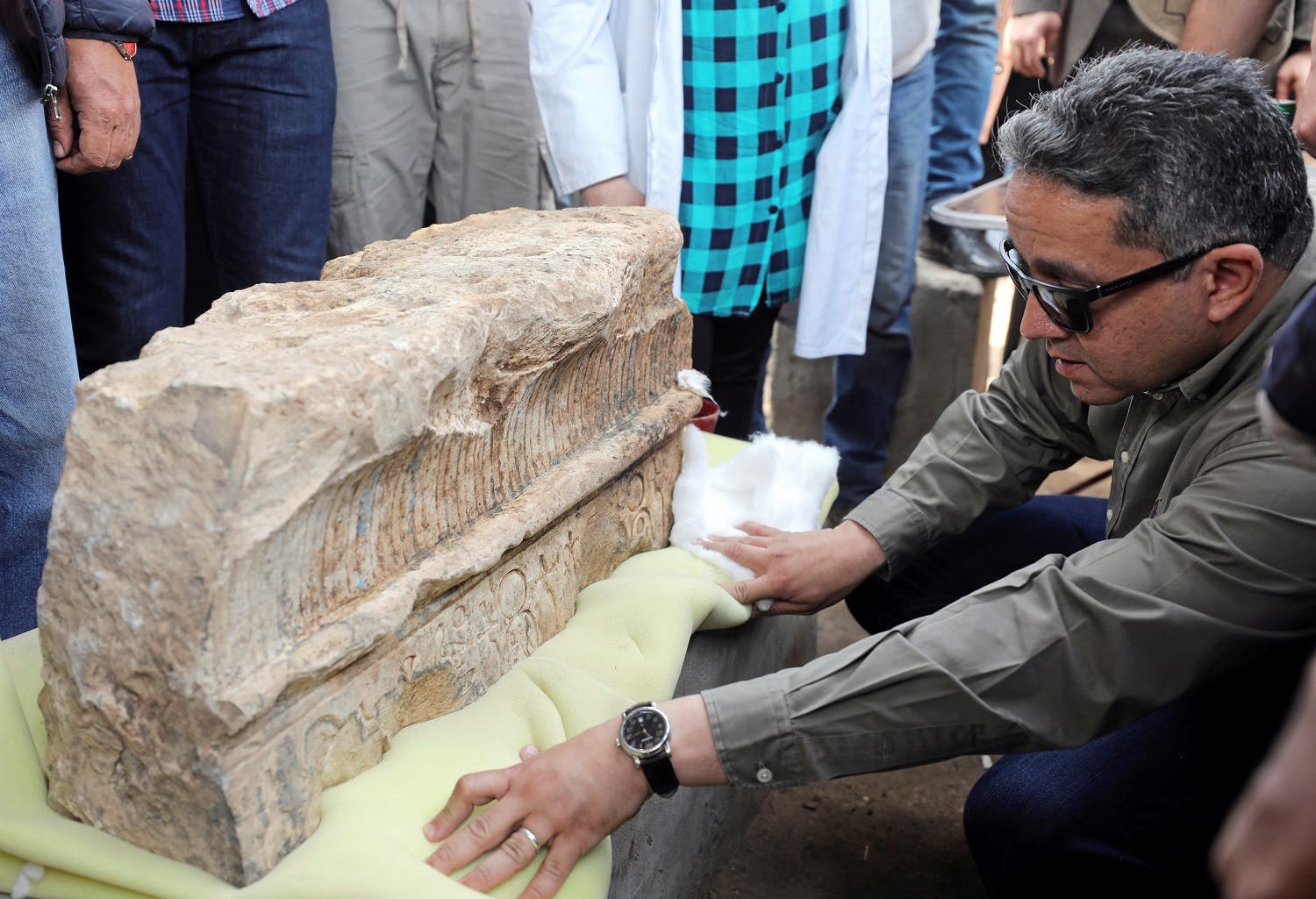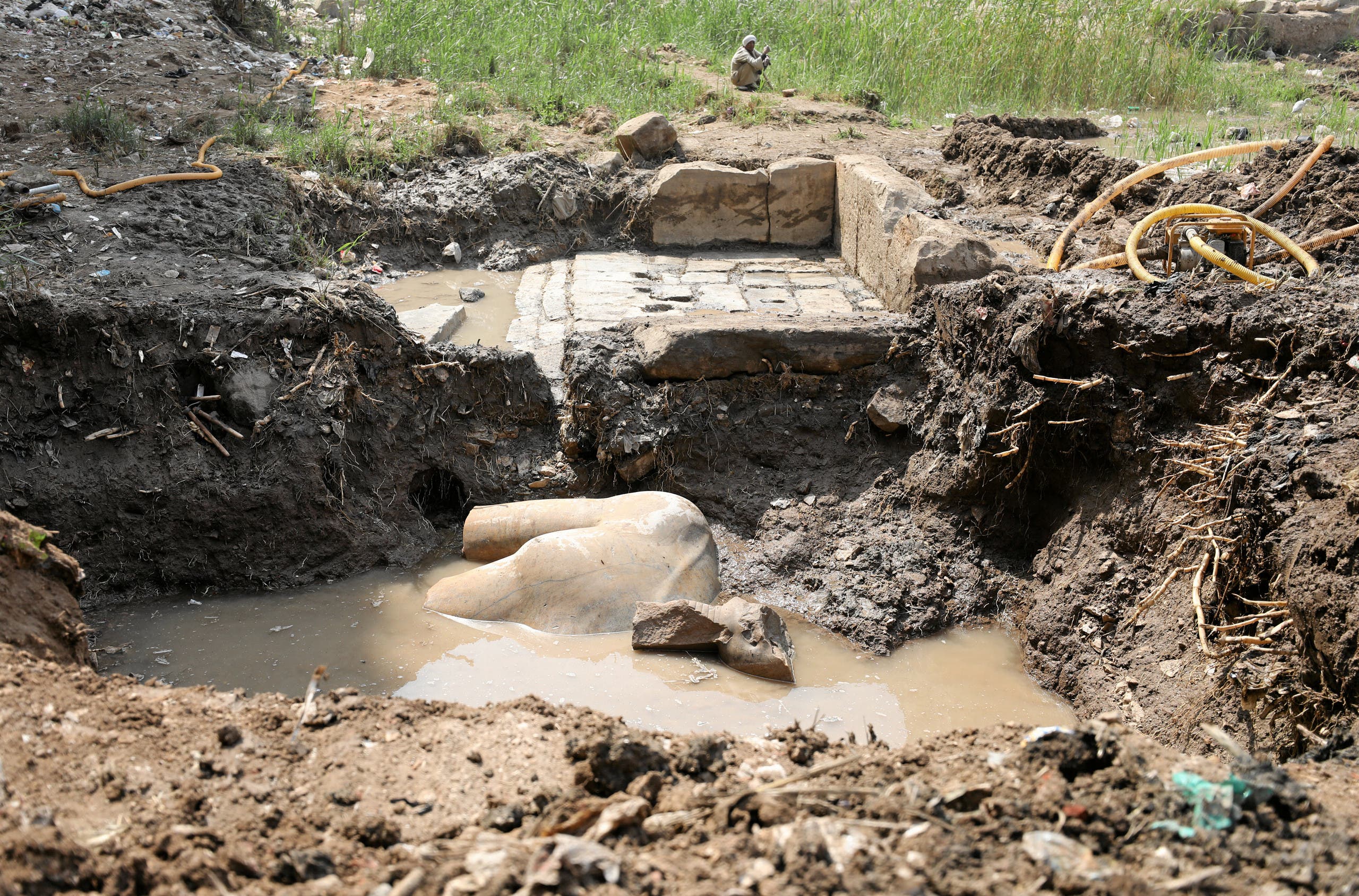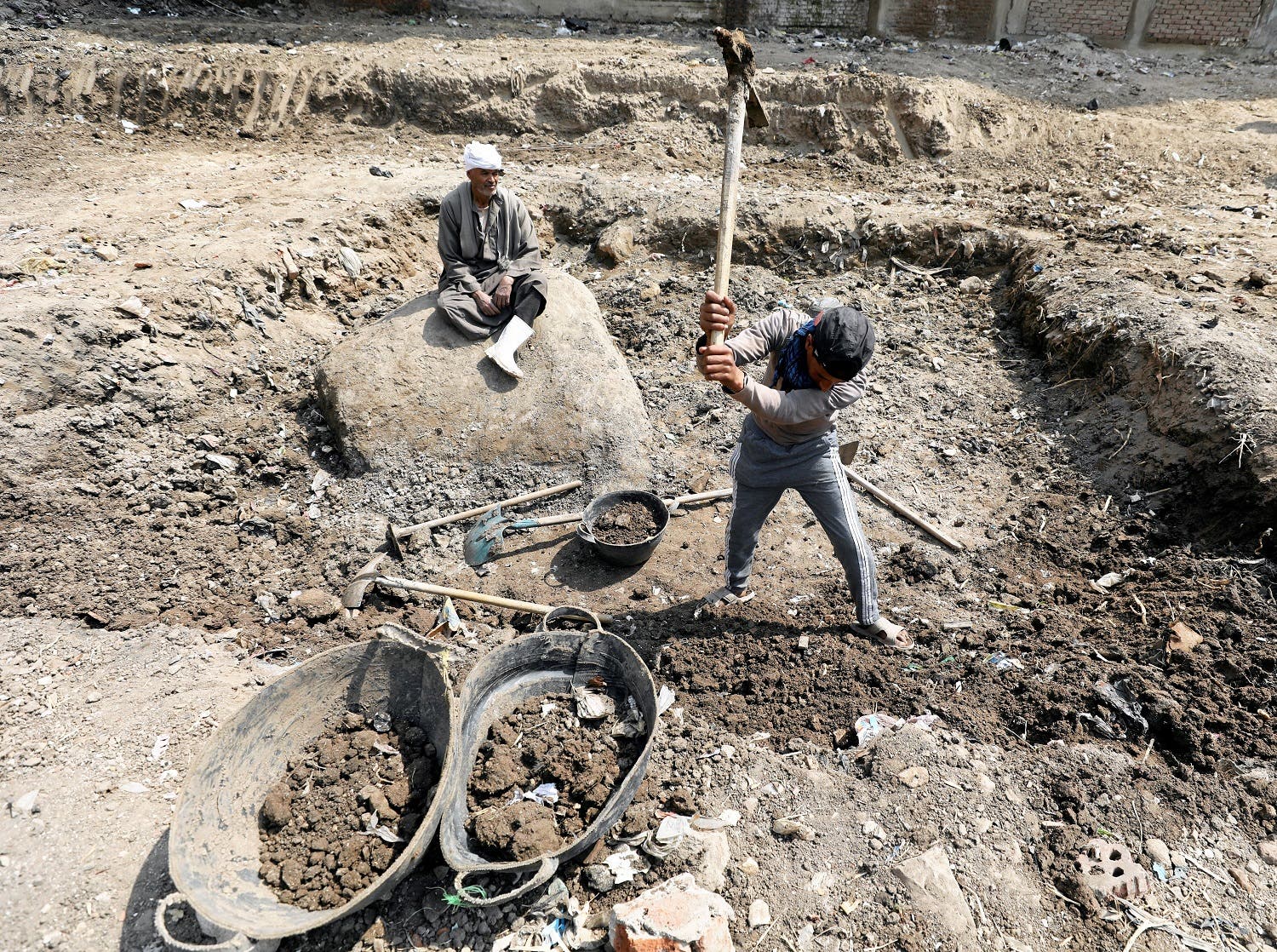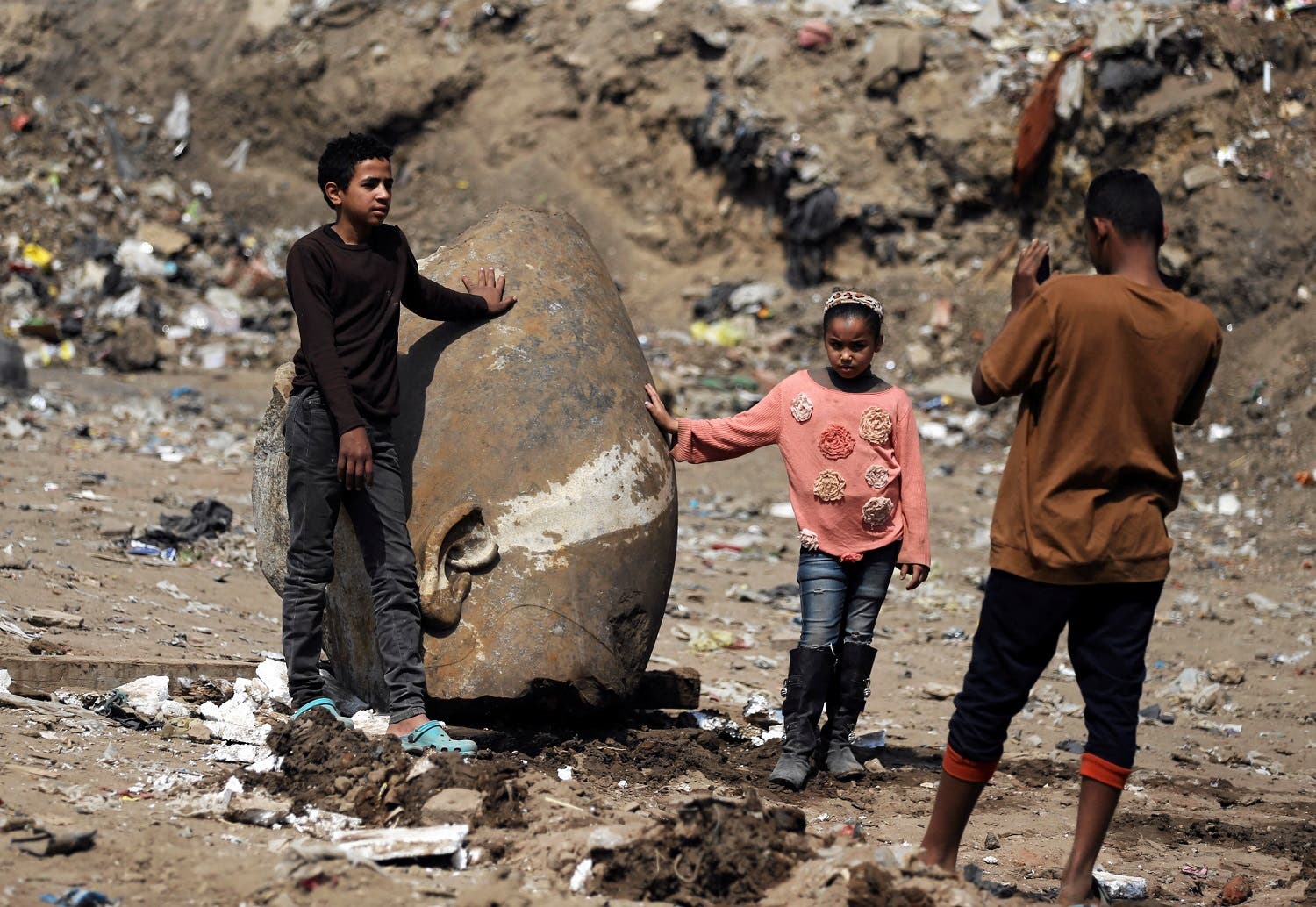one of the most important ever
Colossus depicting Ramses II found in Egypt amid accusations of neglect

Ramses II finding in Egypt
Cairo - Arab Today
Archaeologists from Egypt and Germany have found a massive eight-meter statue submerged in ground water in a Cairo slum that they say probably depicts revered Pharaoh Ramses II, who ruled Egypt more than 3,000 years ago.
The discovery, hailed by the Antiquities Ministry as one of the most important ever, was made near the ruins of Ramses II's temple in the ancient city of Heliopolis, located in the eastern part of modern-day Cairo.
“Last Tuesday they called me to announce the big discovery of a colossus of a king, most probably Ramses II, made out of quartzite,” Antiquities Minister Khaled al-Anani told Reuters on Thursday at the site of the statue's unveiling.
The most powerful and celebrated ruler of ancient Egypt, the pharaoh also known as Ramses the Great was the third of the Nineteenth Dynasty of Egypt and ruled from 1279 to 1213 BCE.


He led several military expeditions and expanded the Egyptian Empire to stretch from Syria in the east to Nubia in the south. His successors called him the “Great Ancestor”.
“We found the bust of the statue and the lower part of the head and now we removed the head and we found the crown and the right ear and a fragment of the right eye,” Anani said.
On Thursday, archaeologists, officials, local residents, and members of the news media looked on as a massive forklift pulled the statue's head out of the water
The joint Egyptian-German expedition also found the upper part of a life-sized limestone statue of Pharaoh Seti II, Ramses II's grandson, that is 80 centimeters long.
The sun temple in Heliopolis was founded by Ramses II, lending weight to the likelihood the statue is of him, archaeologists say.
It was one of the largest temples in Egypt, almost double the size of Luxor's Karnak, but was destroyed in Greco-Roman times. Many of its obelisks were moved to Alexandria or to Europe and stones from the site were looted and used for building as Cairo developed.
Experts will now attempt to extract the remaining pieces of both statues before restoring them. If they are successful and the colossus is proven to depict Ramses II, it will be moved to the entrance of the Grand Egyptian Museum, set to open in 2018.
Creation site
The discovery was made in the working class area of Matariya, among unfinished buildings and mud roads.
Dietrich Raue, head of the expedition's German team, told Reuters that ancient Egyptians believed Heliopolis was the place where the sun god lives, meaning it was off-limits for any royal residences.
“The sun god created the world in Heliopolis, in Matariya. That's what I always tell the people here when they say is there anything important. According to the Pharaonic belief, the world was created in Matariya,” Raue said.
“That means everything had to be built here. Statues, temples, obelisks, everything. But ... the king never lived in Matariya, because it was the sun god living here.”
The find could be a boon for Egypt's tourism industry, which has suffered many setbacks since the uprising that toppled autocrat Hosni Mubarak in 2011 but remains a vital source of foreign currency. The number of tourists visiting Egypt slumped to 9.8 million in 2011 from more than 14.7 million in 2010.


Earlier in the day, some social media users said that the statue was damaged during the retrieval as the archaeologists used improper tools to recover it.
Egypt’s Antiquities Ministry denied reports that an ancient statue had been damaged, the ministry posted on its Facebook page.
The ministry said that the statue, believed to belong to pharaonic King Ramses II, was retrieved on 9 March under the supervision of German and Egyptian archaeologists.
Last month, archaeologists discovered a pharaonic temple with large statues believed to be of King Ramses II under an outdoor marketplace in Cairo.
Source :Al Arabiya
GMT 04:34 2017 Thursday ,21 December
Royal row as body of king who aided Mussolini returnsGMT 18:37 2017 Saturday ,28 October
Egypt battles landmines 75 years after El AlameinGMT 11:03 2017 Tuesday ,01 August
Aswan to celebrate discovery of Abu Simbel TempleGMT 11:19 2017 Sunday ,19 March
Ancient colossus pulled from slum likely not RamsesGMT 19:28 2017 Saturday ,18 February
IPAF to announce winner in 25 April
Economic conference on investment opportunities in Syria kicks off
Bucharest - SANA
With the participation of 120 representatives of Romanian companies, Chambers of Commerce and industry, An economic conference on “Reconstruction in Syria between the development of economic steadfastness and the opportunities ofRussia tests new telemetry system during manned Soyuz MS-11 spacecraft’s launch
Moscow - TASS
The Astra-06 apparatus developed by specialists of Russian Space Systems (RSS) was used for the first time as additional telemetric equipment aboard the manned Soyuz MS-11 spacecraft launched from the Baikonur CosmodromeLiverpool, Manchester City seek neighbours' help in title chase
London - DPA
Liverpool and Manchester City will be looking for a little help from their not-so-friendly neighbours this weekend. The Premier League front-runners face each other's local rivals when City host Everton and Liverpool take on Manchester United. Liverpool jumped above City at theBlue light in smartphones linked to blindness and some cancers
Spain - DPA
Ever since we have started to become chained to our smartphones and tablets, people have been saying that the waves coming off these devices must be bad for us. So often laughed off as conspiracy theorists, it now looks more and moreFestive Fashion by Dubai-based designer ASMARAÏA
Dubai - Arab Today
Dubai-based label ASMARAÏA just launched its pre-fall 2019 collection — and it’s all about cruelty-free, sustainable fashion with a festive edge. Checkmate The 15-piece collection features this checkered skirt-and-jacket ensemble that is giving us major “Clueless” vibes. Gold Rush ‘Tis the season to sparkle and this dazzling, floor-length gold skirt will do the trick. Take note of the chic black bow detail at the waist — it’s the ultimate party look. Feathered fashion The brand works with environmentally-friendly materials such as organic cotton, recycled polyester and faux fur, so you can be sure this feathered look doesn’t come at the cost of an animal’s life. Jewel Tones If you want to glisten like a polished jewel at your next festive function, this emerald-colored skirt is the perfect choice with its sequin details and shimmery overlay. Golden Girl Leopard printMaintained and developed by Arabs Today Group SAL.
All rights reserved to Arab Today Media Group 2021 ©
Maintained and developed by Arabs Today Group SAL.
All rights reserved to Arab Today Media Group 2021 ©


















Send your comments
Your comment as a visitor